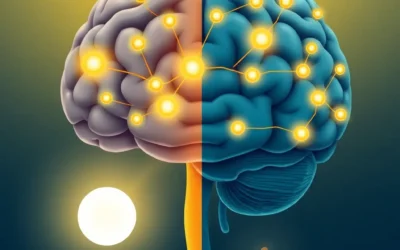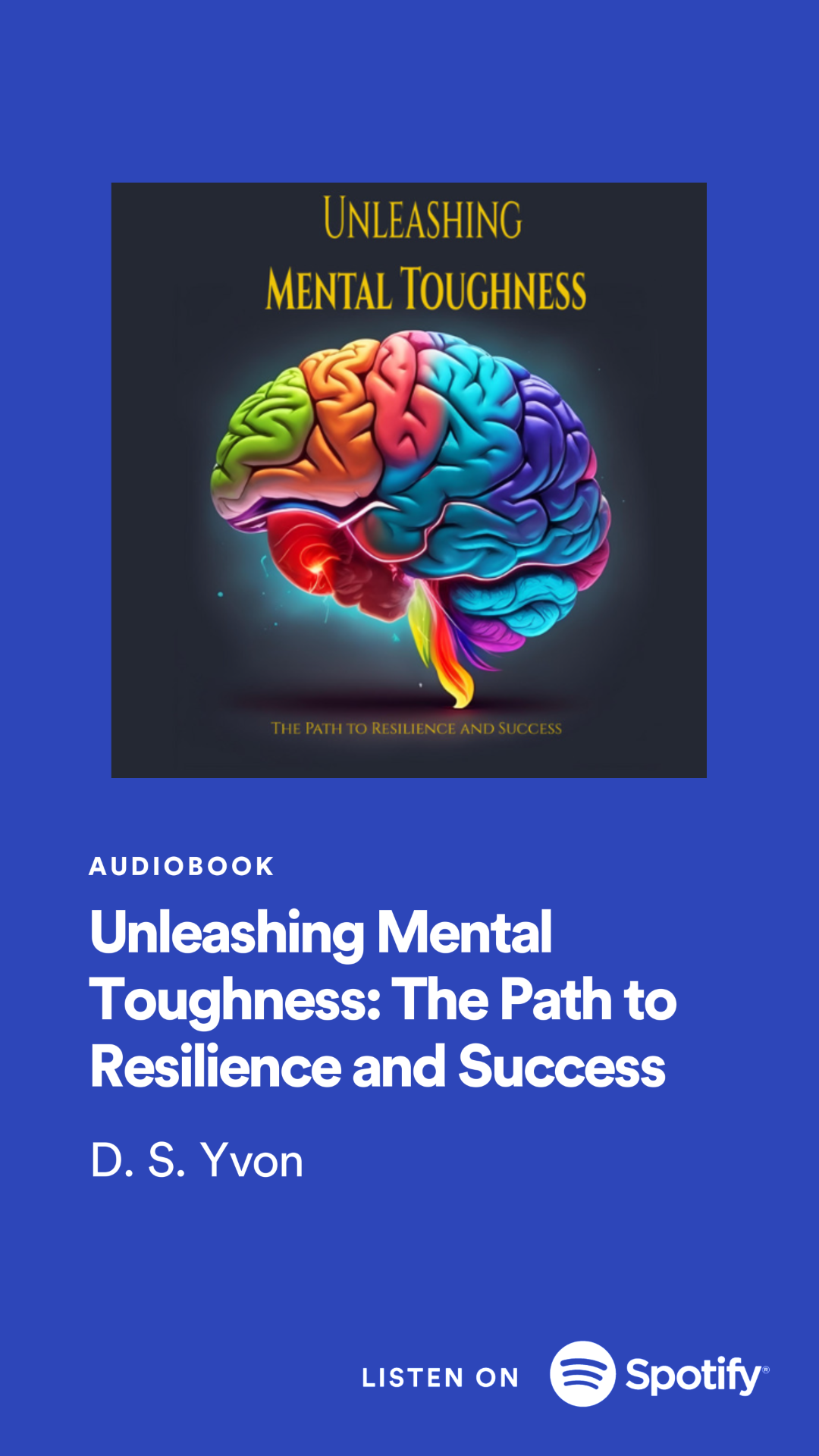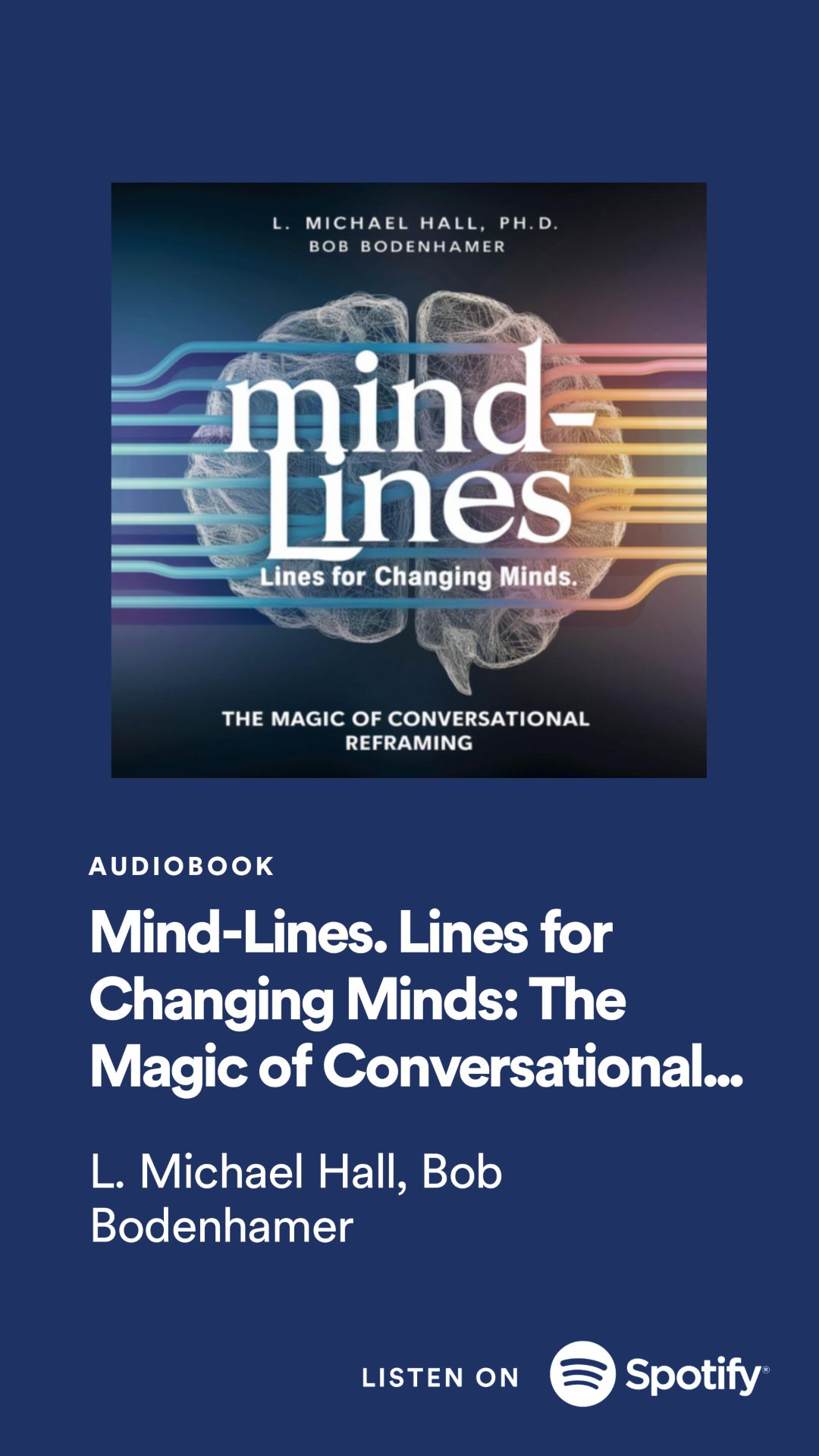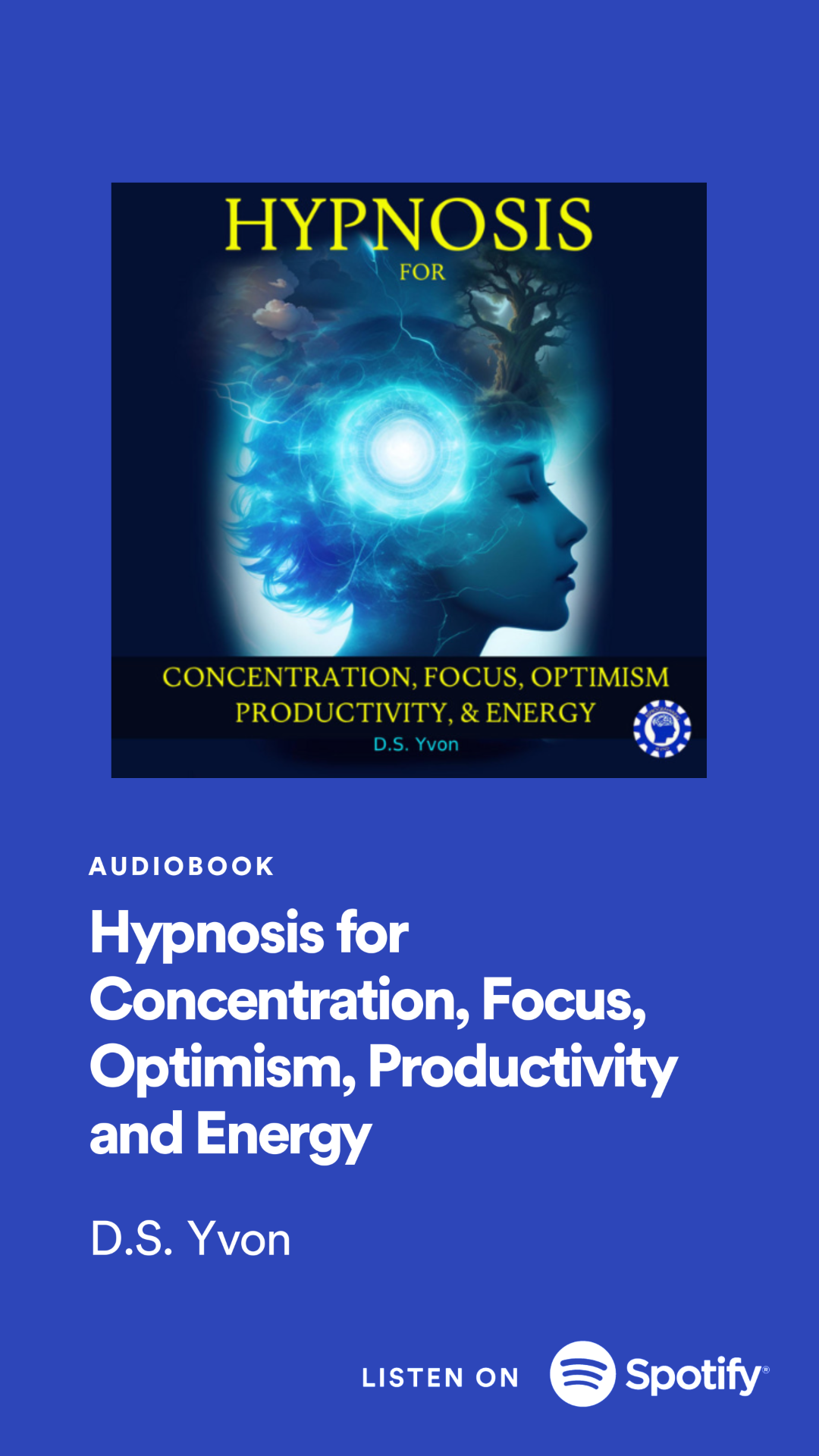After my breakup and divorce, I became curious to discover how some bounced back from adversity. To do so meant finding models of resilience to study and emulate. This led me to research people that became superstars from rubble. These would be folks who had suffered the slings and arrows of life and were able to become champions in bouncing back. Some are James Prochaska, Lady Gaga, Tina Turner, J.K Rowling, Theodore Roosevelt, Donald Hebb and more.
They all experienced adversity, rebounded like rockstars and became a benefit to humanity. That's an overview of people that share a quality that I call 'rockstar resilience.' After realizing that people have been in worse positions and came out fine, next was to find the science about mental health and brain strategies for bouncing back.
This led to Dr. Richard Davidson. He got his PhD in psychology from Harvard. He puts expert meditating monks into fMRI's, is good buddies with the Dalai Lama. Richard was also nominated for two Pulitzer prizes and Time magazine hails him as one of the top 100 people transforming our world. Davidson is also the Founder of the Center for Healthy Minds. Richard Davidson's work is about emotions, resilience and reshaping our brains through the cultivation of positive mental states.
Improving the circuits for well-being.
Each of these four is plastic i.e regulated.
1. Purpose in Life - having a clear direction in life and a sense that life has meaning—has been linked with faster recovery from negative events and with longer life.
2. Connection - emotions that underpin successful relationships with others—kindness, empathy, and maintaining a positive outlook.
3. Insight - Healthy sense of self. Ability to defeat self-defeating attitudes and bounce back from adversity.
Key brain circuit involved in emotional regulation linked with some people’s ability to recover more quickly than others from negative experiences.
4. Awareness, the inverse of mind wandering.
When people are mind wandering they typically report that their emotions are dysphoric. When people are in the groove, in the flow, when they're in the present moment, they have much higher reports of well-being.
Each of these four constituents is mediated by different circuits in the brain and exhibit a lot of plasticity.
Next chapter is about a natural process in the brain for updating memories.
This is vital because your limbic system has created associations to your ex that are no longer of service. Those memories of your ex is what we will be targeting and modifying. This process occurs in a 5/6 hour window of opportunity called memory reconsolidation.
The best book on this topic is "Memory Reconsolidation" by Cristina Alberini. She and Joseph LeDoux are the scientists who wrote about the current biology of memory and how it was misunderstood for over 100 years. We will use the understanding for changing memories in the strategies to get you over your ex in 5 hours.
Memory reconsolidation is an innate process for unlocking stored learnings and conditionings at the synaptic level and this natural process has been found in nematodes, snails, honeybees, sea slugs, medaka fish, crabs, chicks, mice, rats and humans, for a wide range of different types of emotional learning and memory as well as for non-emotional memory, such as motor memory and semantic (factual) memory, corresponding to memory networks in many different anatomical regions of the brain (16. Nader & Einarsson, 2010).
When a de-consolidated memory is unlearned and erased, erasure is limited to precisely the reactivated target learning, without impairing other closely linked emotional learnings that have not been directly reactivated. This was shown both in an animal study using chemically induced erasure (17. Debiec, Doyère, Nader, & LeDoux, 2006) and in a human study using endogenous, behavioural erasure (18. Schiller et al., 2010).Likewise, (19. Kindt, Soeter, and Vervliet, 2009) demonstrated in a human study that erasure of a learned fear did not impair autobiographical memory of the experiences in which subjects had acquired the conditioned fear/flight stress response.
After the problem memories of your ex have been briefly reactivated and mismatched, its neural circuits remain in a deconsolidated or labile state (changeable) for about five hours. This understanding is based on what has been demonstrated by a variety of animal and human studies (12. Duvarci & Nader, 2004; 13. Pedreira, Pérez-Cuesta & Maldonado, 2002; 20. Pedreira & Maldonado, 2003; 18. Schiller et al., 2010; 15. Walker, Brakefield, Hobson & Stickgold, 2003).
This memory rewriting process takes about five hours for the unlearning and updating of a memory and this process is what will help you get over your ex the fastest.
The emotional memories regarding your ex is the target that we are seeking to have neutralized. After reconsolidating the problem memories of your ex, you will still remember them, but you’ll feel differently about them.
Next is the therapeutic use of memory reconsolidation. For this we we look at the studies by Richard Gray and his successful work on veterans with the reconsolidation of traumatic memories protocol.
Strategies using this memory reconsolidation framework have been successfully applied to military men (24) and women (25) for relief of PTSD and memories of military sexual trauma.Here is a quote from a study published on the American Psychological Association website of a paper titled "Reconsolidation of Traumatic Memories for PTSD: A randomized controlled trial of 74 male veterans
Example 1.
Gray, Richard, Budden-Potts, Denise Bourke, Frank. "Reconsolidation of Traumatic Memories for PTSD: A randomized controlled trial of 74 male veterans": Corrigendum.
https://psycnet.apa.org/record/2019-01100-011
"The article provides evidence to support a fast (5 hours or fewer) robust intervention for PTSD characterized by intrusive symptoms including current-month flashbacks, nightmares, and accompanied by sympathetic arousal in response to trauma narratives. The intervention is well tolerated and has demonstrated efficacy up to one year."
Example 2.
Gray, Richard, M. Budden-Potts, Denise Schwall, Richard J. Bourke, Frank F. "An open-label, randomized controlled trial of the reconsolidation of traumatic memories protocol (RTM) in military women." https://psycnet.apa.org/record/2020-86321-001
We will also see how that type of brain mechanism is used by Bruce Ecker with his work in coherence therapy and his book 'Memory Reconsolidation, Uprooting Memories at Their Roots.' Instead of just picking one or two three examples of how transformative reconsolidating memories can be, here is list in the ways Coherence therapy has been doing so for years.


 Now that is some of the overview to regain better control of your mind and the skill to change problem memories for good.
Now that is some of the overview to regain better control of your mind and the skill to change problem memories for good.
After well-being, resilience, neuroplasticity and memory reconsolidation, is the chapter about Post-traumatic Growth.
The rockstars in this research is Tedeschi and Calhoun. They are the authors of "The handbook of Post-traumatic Growth: Research and Practice'.
Later we will use some of the hallmarks of post-traumatic growth as affirmations and illeisms.
Financial Costs
The total excess economic burden of PTSD in the US was estimated at $232.2 billion for 2018 ($19,630 per individual with PTSD).
Total excess costs were $189.5 billion (81.6%) in the civilian population.
$42.7 billion (18.4%) in the military population, corresponding to $18,640 and $25,684 per individual with PTSD in the civilian and military populations, respectively. In the civilian population, the excess burden was driven by direct health care ($66.0 billion) and unemployment ($42.7 billion) costs. In the military population, the excess burden was driven by disability ($17.8 billion) and direct health care ($10.1 billion) costs.
Conclusions: The economic burden of PTSD goes beyond direct health care costs and has been found to rival costs for other costly mental health conditions. Increased awareness of PTSD, development of more effective therapies, and expansion of evidence-based interventions may be warranted to reduce the large clinical and economic burden of PTSD.
Additionally, It can be helpful to talk to a friend or family member about your feelings or seeking the help of a therapist for breakups. If you're feeling anxiety there is also online anxiety therapy from licensed counsellors which can help with triggering emotions and reactions you might still have about your ex. There are applications that have meditations and audios to help you sleep, relax, get over stuff. One to consider is the headspace app because they have good content and a free trial so you can checkout their goods and experience what works best for you.
Costs of Heartbreak
Emotional pain: Breakups can lead to intense emotional distress, including feelings of sadness, anger, betrayal, and loneliness. Dealing with these emotions takes time and effort to heal.
Loss of trust: A breakup can result in the loss of trust in future relationships. It may take time to rebuild trust in others and open up emotionally again.
Impact on self-esteem: The end of a relationship can negatively affect self-esteem, leading to feelings of inadequacy, self-doubt, and questioning one's self-worth.
Social circle changes: When a couple breaks up, mutual friends may feel compelled to choose sides or maintain a certain distance. This can result in the loss of shared social connections and a need to rebuild one's social circle.
Financial implications: Depending on the nature of the relationship and shared responsibilities, a breakup may involve financial costs. For example, dividing shared assets, adjusting to a new financial situation, or potentially incurring legal expenses if the breakup involves legal proceedings.
Lifestyle adjustments: Being in a long-term relationship often involves adapting to a certain lifestyle. After a breakup, individuals may need to adjust their routines, living arrangements, and even change their day-to-day habits.
Disruption of future plans: If the relationship had long-term plans or commitments, such as marriage, buying a house, or starting a family, a breakup can disrupt these aspirations and require individuals to reassess their goals and dreams.
Impact on mental health: A heartbreaking breakup can contribute to mental health challenges such as depression, anxiety, or even post-traumatic stress disorder (PTSD). Professional support and self-care practices may be necessary to navigate these difficulties.
Productivity and focus: During the initial stages of a breakup, individuals may find it challenging to concentrate on work or other responsibilities. The emotional turmoil can affect productivity and overall performance in various areas of life.
Time investment: Healing from a breakup requires time and energy. It may take weeks, months, or even years to fully recover and move on. This can delay personal growth, career advancement, or other pursuits.
Emotional distress: A breakup can lead to intense emotional distress and suffering for both individuals involved. It can perpetuate feelings of fear, anxiety, and insecurity, making it difficult to heal and move forward from the traumatic event.
Dependency: This dependency can hinder personal growth and independence, as individuals may rely on the bond to cope with their emotions rather than seeking healthier means of support.
Limited perspective: A trauma bond can create a distorted and limited perspective on relationships. It may become challenging to establish healthy boundaries and differentiate between genuine care and the trauma bond's dynamics. This can result in difficulties forming healthy relationships outside of the bond.
Repetition of trauma: In some cases, trauma bonds can lead to the repetition of abusive or harmful patterns. Individuals may become trapped in a cycle of reenacting the trauma or seeking out relationships that replicate the dynamics of the initial traumatic experience.
Isolation: Being caught in a trauma bond can contribute to isolation from friends, family, and other sources of support. The intense and often secretive nature of trauma bonds may make it challenging to seek help or share experiences with others, leading to a sense of loneliness and disconnection.
Difficulty in recovery: Recovering from a trauma bond can be a long and challenging process. Breaking free from the emotional attachment and addressing the underlying trauma requires significant personal effort, therapy, and support. The process may involve relapses and setbacks along the way.
 Learn the mental training strategies used by the military to clear veterans of PTSD. This is the strategy mentioned in the Washington Post that is considered the most effective and least known protocol for changing problem memories.
Learn the mental training strategies used by the military to clear veterans of PTSD. This is the strategy mentioned in the Washington Post that is considered the most effective and least known protocol for changing problem memories.
Get Over a Breakup and Learn to Change problem memories so you can move forward without the baggage of a past relationship.
Learn how to get over a breakup fast and change the memories of your ex, for good!

























